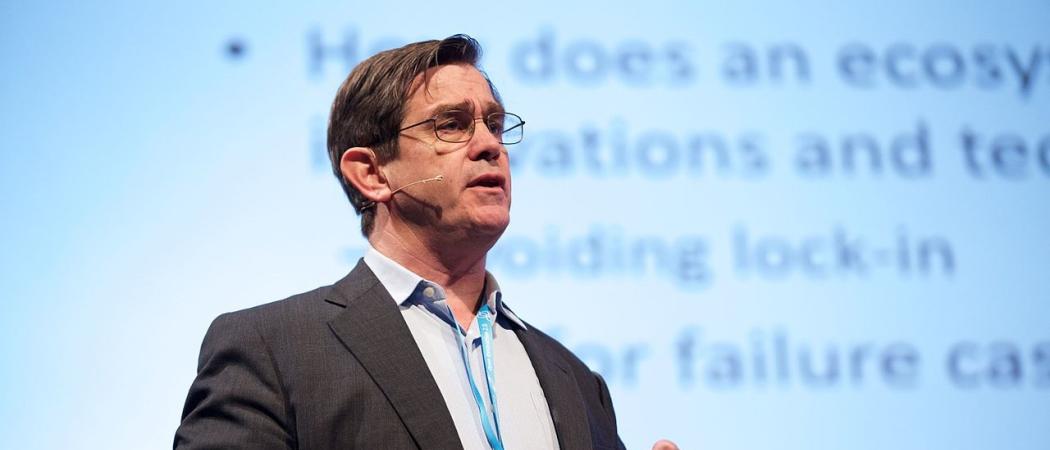Technologies are advancing at an exponential rate. So why aren’t our economies? The father of open innovation gives his view

Henry Chesbrough. Photo: Wikimedia Commons
It is an exciting time to be alive in Silicon Valley. Digital technologies, blockchain, artificial intelligence (AI), dancing robots, private space companies and autonomous vehicles abound around here. Technologies are advancing at an increasing rate, which some call “exponential technology”.
This augurs well for our future, because an accelerating rate of advance promises to usher in an era of abundance. Imagine our world in twenty years’ time, when according to IBM’s Jim Spohrer, commonly available AI technologies will give each of us access to the equivalent of 100 human experts, personally trained by you to provide all the information and advice you need in living your daily life.
Yet a moment’s reflection reveals that this abundant future is missing some essential details. Our rate of economic productivity growth, for example, is going down, not up. The rate of productivity growth in the US has been just 1.1%, far below the 3.7% rate of growth achieved from 1947 to 2007, according to the US Bureau of Labor Statistics.
This is not what exponential technology has promised us. Indeed, I consider it an Exponential Paradox: technological advance is accelerating, while economic productivity growth is declining.
Why is this happening? One possibility is a measurement problem, where the new technologies require new measures to capture their true value to society. But measuring productivity has always had its challenges, so why would our measures suddenly be worse than before?
A more likely cause identified in a recent study by the OECD is a growing gap between the Best and the Rest, where the Best organisations are indeed accelerating their growth and productivity, but the Rest are falling farther and farther behind. We can easily see this with AI. While a few companies are having real success with it, most have not even begun to prepare their data to be able to train an AI algorithm.
Along with the Best-Rest gap, another concern is that we have failed to renew our investments in innovation infrastructure in recent times. Our innovation infrastructure consists of the hard and soft assets in the society that are needed to generate, disseminate, and absorb new and innovative knowledge. This requires investments in hard assets, like 5G connectivity or up-to-date airports, roads and train stations, as well as in soft assets, like training, skills, universities and other forms of human capital development.
The infrastructure starts with public investment, which in turn attracts a larger amount of private investment, which culminates in greater innovation capability for the whole society.
There was a time when we invested substantially in innovation infrastructure. After the second world war, the US passed the Serviceman’s Readjustment Act of 1944, known as the GI Bill, and sent millions of returning soldiers off to college, which greatly enhanced the skills of millions of workers and boosted the productivity of American businesses.
In the 1950s, we built the Interstate Highway system, which greatly improved road transportation and logistics, and supported myriad new businesses across the land.
In the 1960s, we launched DARPA and the Apollo moon program, and developed a wide variety of computing, semiconductor, communications, and materials technologies that culminated in the Silicon Valley we celebrate today.
These were huge investments that resulted in strong economic productivity growth for decades. The US led the world in making these investments at that time. In many ways, we are still coasting on the innovation infrastructure that we built 60 or more years ago. At a time when interest rates are at historically very low levels, the cost to finance a renewed boost to our innovation infrastructure is surprisingly affordable.
It is time to renew our investment in innovation infrastructure, in order to spread the fruits of exponential technology more widely throughout society, and to narrow the chasm between the Best and the Rest.
Henry Chesbrough is Faculty Director at the Garwood Centre for Corporate Innovation, UC Berkeley-Haas School of Business





 A unique international forum for public research organisations and companies to connect their external engagement with strategic interests around their R&D system.
A unique international forum for public research organisations and companies to connect their external engagement with strategic interests around their R&D system.